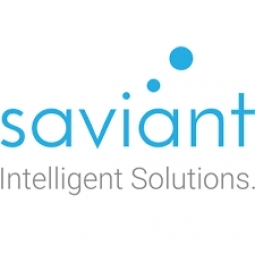Case Studies.
Add Case Study
Our Case Study database tracks 15,026 case studies in the global enterprise technology ecosystem.
Filters allow you to explore case studies quickly and efficiently.
Download Excel
Filters
-
(5)
- (3)
- (2)
- (1)
-
(4)
- (3)
- (2)
- (1)
-
(3)
- (2)
- (1)
- (1)
- View all
-
(3)
- (3)
- (2)
-
(2)
- (1)
- (1)
- View all 6 Technologies
- (2)
- (1)
- (1)
- (1)
- (1)
- View all 7 Industries
- (3)
- (2)
- (1)
- (1)
- (2)
- (1)
- (1)
- (1)
- (1)
- View all 7 Use Cases
- (2)
- (1)
- (1)
- (6)
Selected Filters

|
Powering Smart Home Automation solutions with IoT for Energy conservation
Many industry leaders that offer Smart Energy Management products & solutions face challenges including:How to build a scalable platform that can automatically scale-up to on-board ‘n’ number of Smart home devicesData security, solution availability, and reliability are the other critical factors to deal withHow to create a robust common IoT platform that handles any kind of smart devicesHow to enable data management capabilities that would help in intelligent decision-making
|
|

|
Transforming Water Utilities with IoT, saving a Billion Gallons every year!
The big problem that Utilities face includes:(i) How to make meters “smart” and ingest the data from homes to the companies and;(ii) how to derive intelligent actions from huge amounts of meter data, in an efficient and cost-effective way.Solving these problems would help Utilities track & monitor water consumption data, identify leakage, theft & various anomalies. This demands the need of a scalable system with remote asset management & proactive maintenance capabilities. This would also help end-consumers understand their water usage for better decision-making to conserve water.
|
|

|
Real-time visibility of Supply chain operations with IoT
Food service delivery companies generally manage large volumes of food or non-food products, with very low profit margins. And, one of their major challenges involves optimizing operational efficiency during food delivery, for accelerated business growth and competitive advantage.However, to address this challenge, they had no means to know what exactly happens during the delivery hours. Was the food inventory ready to deliver is kept under optimum temperature conditions? Were the drivers taking the right routes? Was the customer order being delivered on time? Their business required visibility of its supply chain operations in real-time, so they could track & monitor what’s happening every minute. This would help optimize operations and save money.
|
|

|
High-end, scalable Cloud based IIoT solution for Device Management & Analytics
Many instrumentation leaders face challenges including how to:Track & monitor their instrument data such as Temperature, Humidity, Dew point or PressureAchieve real-time visibility of data to take necessary measures/actions.Enable Remote Asset management capabilities to keep a watch on the end-devices at pre-scheduled intervalsIntegrate notification engine to alert the end-customers in case of asset failures or abnormal conditions
|
|

|
Real-time Data Engineering for Industrial Systems Testing & Monitoring
The UK-based instruments engineering company was facing challenges with their existing system of capturing, managing, and analyzing data from live machines and systems. The sensors installed on various components of industrial equipment like turbines and pumps captured physical data at a high frequency, which was then managed and analyzed locally on desktop-based systems. This resulted in manual, inaccurate, and time-consuming fault detection. The company decided to automate data collection, enable cloud-based data processing, and implement AI-based fault detection. However, they faced several challenges including the difficulty of scaling and deploying traditional predictive tools, the need for predictive analytics to be embedded within their application, the requirement of expertise for data preparation, cleansing, choosing the right algorithm, training, and validation, and the need for the platform and application to easily integrate with all hardware products.
|
|

|
Data Engineering for Enabling Condition Monitoring of Industrial Equipment
The instrument engineering company faced a significant challenge in managing the data acquisition from various devices and sensors. Each device or sensor had its unique technology and served a different purpose, requiring a separate data acquisition platform. This led to a scattered product portfolio, disconnected sales process, and low customer perception. The company's end customers, large industrial enterprises, often needed to work with multiple devices or products, which meant dealing with different platforms. This situation resulted in a large effort and resources required to maintain these platforms, and a slow and lengthy time-to-market. The company also faced a lack of standard functionality across platforms.
|
|

